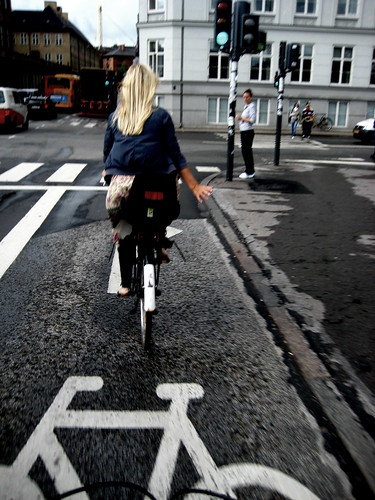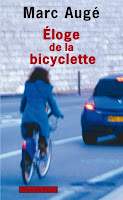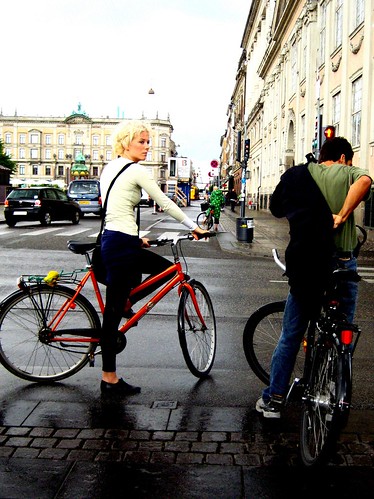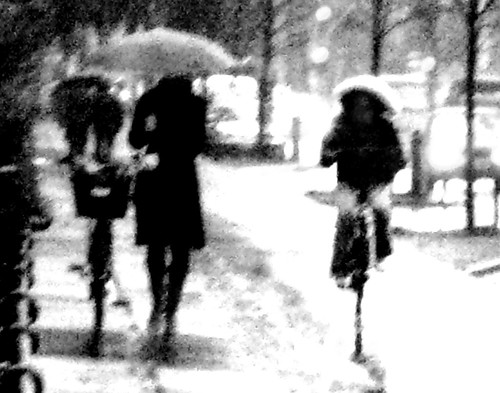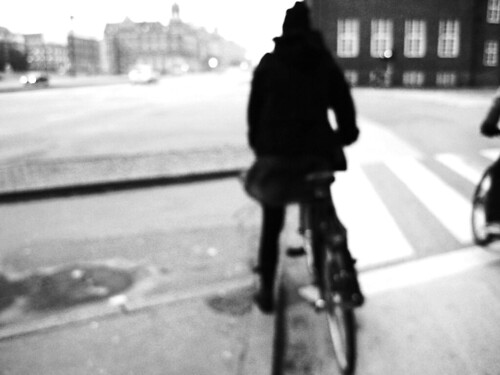
A city is movement. This movement is caused solely by the inhabitants of the city. A city is people moving.
In the country it is the quiet scenes that appeal. A landscape stretching away with only a grazing cow or drifting clouds or crashing waves to suggest that things are alive.
In a metropolis we are all part of an organic symphony of motion. We all contribute to it and we all regard others contributing to it.
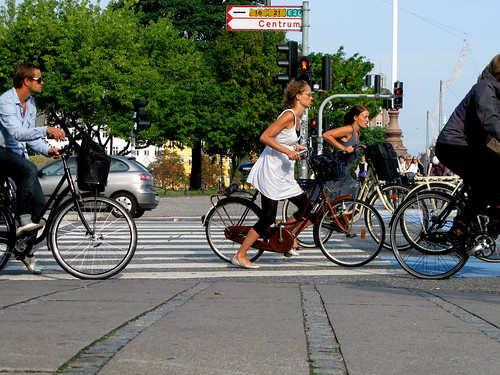
It is in cities that a society is propelled forward by the people who live there. The foundations of the future are laid down in cities and the rest of the nation plays an eternal game of catch up. What appeals to me the most about Copenhagen is that the core melody of our symphony is provided by the bicycle. Cars rumble past in constant, linear paths with their occupants hidden from view. The melody is staccatto and repetitive and not a little dull.
Copenhageners on bicycles are clearly visible to everyone, especially to each other, and their melody is much more symphonic. There is human energy on display. There are visible faces and assorted postures to regard. As homo sapiens we search for recognisable signals from faces and body language. A long line of cars gives us little we can identify with. Psychology has taught us that we humans despise creatures like spiders and insects because we cannot identify with them because they lack a human face, whereas we love dogs and monkeys and other creatures with faces resembling our own.
[perhaps that is why the front end of cars are designed to have big, round headlight eyes and a mouth-like bumper?]
Cycling in itself is movement. Legs swirling around, heads turning, arms signalling, bodies hopping on and off while still rolling. All appealing and recognisable to the human eye. A flirtacious smile, a flash of leg, gesticulation during a conversation at a red light. We can associate with it.

Cars are fine. They aren't going anywhere and they shouldn't. Wishing for the death of the automobile is a ridiculous pipe dream. A vast reduction of cars on the roads and a massive increase of cyclists - with all the health and societal benefits involved - is, however, a splendid goal.
Transforming cities into symphonic, melodic, urban landscapes filled with people in motion, in movement, in concerto is an appealing thought. This is what I mean when I talk of Copenhagenizing the Planet.
There are many reasons why I love Copenhagen. The most important must surely be that my fellow citizens surround me and I can watch them move. Each an integral part of the city. Each a visible moving part in the organic spectacle of this metropolis, not covered by a hood or encased in steel, but rather brilliantly exposed. Like taking the back cover off a old, ticking pocket watch and seeing the finely crafted parts all contributing to keeping track of time.
As Johannes V. Jensen wrote of Copenhagen cyclists in his 1936 novel 'Gudrun', "
If one is bumped by a car, the whole school is bumped. It's a nerve one has in the elbow, a flock function, which Copenhageners have learned so well that it is second nature."
Now we have safe, separted bike lanes of course but the school of fish analogy still applies.
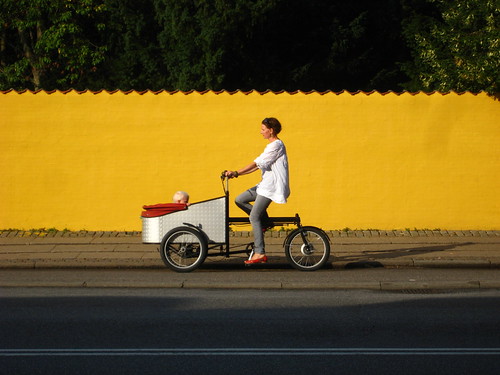
And while I often revel in this populous symphony there are, rest assured, ample opportunities for solitary moments. A fish can leave the school and swim solo if it wishes.
 Photo by Jackson Owen on Flickr.
Photo by Jackson Owen on Flickr.
